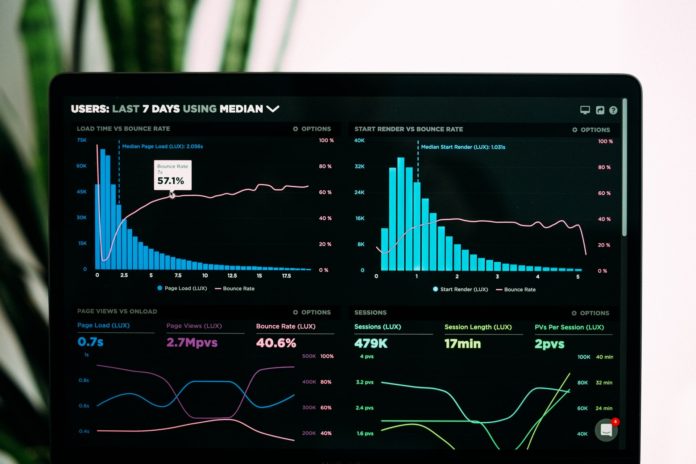
We often interchangeably use the terms ‘trading’ and ‘investing’. However, they are quite different from one another. In general, investing aims to build wealth over the long run. Trading, on the other hand, is focused on making short-term profits.
The purpose of this guide is to examine investment and trading opportunities and to explain how they differ and how you can decide the one to put your money in per time.
Contents
What is investing?
Investing is a long-term strategy that involves buyiyng and holding. Investors’ goals are often to generate substantial profits from rising asset prices over the long-term and any income generated from assets held, sometimes for decades.
Investors’ exact time horizon (the expected duration of their investment) depends on their financial objectives. Investing for retirement, for example, may have a time horizon of 20 years or more. On the other hand, someone who invests to build up a deposit for a house may have a shorter time horizon.
Investment fundamentally relies on the principle that higher potential returns of a particular investment are accompanied by higher risks. This is referred to as the ‘risk-return tradeoff.’ The risk involves the possibility that the actual returns of an investment will be different from expectations.
A longer-term investor has more room to focus on investments with higher growth and higher risk. In other words, volatility in the markets is less of a concern to them because they have enough time to ride out of it. Alternatively, an investor with a shorter time horizon should choose more conservative investments. Otherwise, they could end up losing money.
See how you can invest in stocks here
Are there any investing styles?
Investing can be categorized into two main styles. They are:
Active investing
An investor who uses this strategy actively buys and sells securities for their portfolio to outperform an investment benchmark index over time. Accordingly, an investor with an active stock portfolio might invest in 30 stocks with the aim of outperforming the S&P 500 index (an index of stocks that includes 500 large US companies).
Passive investing
Investing passively is simply a matter of matching the performance of an index or market over time. This method does not require the investor to pick individual stocks. Instead, they put their money in benchmark-based funds, for example, exchange-traded funds (ETFs) and index funds, which track market performance.
What is trading?
In contrast to investing, trading is a more active approach that focuses more on short-term objectives.
The goal of traders is to profit from short-term price movements, not to hold assets for long periods. They typically buy and sell securities within weeks, days, and even hours.
Traders earn profits not only from rising but also from falling asset prices, unlike investors who only make profits when their assets rise. In contrast to investors, traders look at what direction an asset’s price will likely go in next and try to profit from that price movement rather than the long-term growth prospects of the asset.
Investors often persevere through periods of underperformance, whereas traders frequently close out losing trades through ‘stop-loss’ orders. These orders help traders manage their capital.
A lot more time is required for trading compared to investing. Investors can purchase stocks or funds and forget about them; traders, on the other hand, must keep track of market developments constantly.
Get started in forex trading with this comprehensive guide
Trading styles
Traders follow a variety of trading styles which include:
Scalping
It is a trading strategy aimed at capturing consistent small profits. In this trading style, positions are held for very brief periods, sometimes just a few minutes.
Day trading
This trading approach involves opening and closing positions in one day. By closing your position before the market closes, you minimize the risk of receiving negative news the next day.
Position trading
Position trading allows traders to take advantage of dominant price trends. A trend occurs when the price of an asset moves in one direction for a prolonged time.
Swing trading
Instead of identifying the start and end of a trend as in position trading, swing traders seek to identify more significant price movements. A swing trader may hold positions for several days or weeks.
Also Read: How to Succeed with Binary Options Trading
More differences between trading and investing
Investments and trading are two genres of wealth creation in the equity market. Trading and investing, however, are very different approaches to creating wealth or making profits in the financial market.
Let’s imagine you and your friend each bought the same amount of seeds to sow in your fields today, but you sold some of the seeds the next day to make a profit. But your friend, on the other hand, decides to plant and grow their seeds for a few years. The planted seeds grew new seeds which were still planted to produce more seeds.
At the end of the day, your friend will make a lot of profit in the long run than you who sold your seeds. However, you two can decide to buy more seeds from the profit you made from your first sale.
Based on this analogy, your friend is an investor while you are a trader.
That said, here are the five significant differences between trading and investing:
Time/Period/Duration
Trading involves holding stocks for a short period. The time frame could range from one week to one day, or even less.
Traders hold stocks to make money in the short term, whereas investing employs a buy-and-hold approach. Money is often invested for months, years, or even decades.
Capital Growth
In the stock market, traders look at the price movements of stocks. If the prices go up, traders may sell. Trading is simply the art of timing the market, whereas investing is the art of creating wealth through compound interest and dividends by holding quality stocks over the long run.
Risk
Investing and trading both involve risk to your capital. Trading, however, involves a higher level of risk and higher potential returns because the price may spike or plummet in a short period.
It takes time for an investment to develop. Compared to trading, it involves lower risks and lower returns, but over time it may deliver higher returns, thanks to compound interest and dividends. Investing in quality stocks over the long term is not affected much by daily market cycles.
Also Read: 6 Awesome Ways To Make Money Online in Nigeria | 2021
Which is better between trading and investing?
Investing and trading are entirely different activities despite both involving financial markets and assets. Therefore, generalizing or comparing them can be challenging.
In general, though, trading is riskier due to two factors:
- The process involves speculation, which is as quick decisions and educated guesses as just plain gambling.
- It requires minimal (or no) diversification because it’s challenging to monitor multiple trades simultaneously. By its very nature, diversification evens out both increases and decreases, and traders seek maximum gains.
There is, however, also the possibility of higher profits when trading. On average, investors may expect to earn 8% to 10% on their portfolios. However, a trader likely earns that much or more per month. It is possible to earn up to 60% of your capital’s value in an uncompounded year by making “just” 5% a month.
In light of these factors, it is hard to call either strategy the “best” way to invest in stocks. Investing is the way to go if you want to avoid volatility and have a low tolerance for risk. But trading could be appealing if you like taking risks and can earn significant returns quickly.
It is essential to realize that trading and investing needn’t be mutually exclusive. As an example, you might choose to invest 90% of your money in a diversified portfolio that’s intended to be held for the long run and reserve 10% of your funds for speculative, short-term trading.
In Conclusion
You can make quick money through trading. Nevertheless, as with gambling, it can quickly result in considerable losses as well. On the other hand, the short-term gains from investing tend to be small, but the losses are usually less severe.
Trading part of your money can be enjoyable, especially if you’re comfortable with the risks involved. Long-term investing is the best option if you are primarily interested in reducing risk and exposure to volatility. However, if you hope to reach a specific goal by a particular date, investing slowly and steadily is usually the best approach.
























